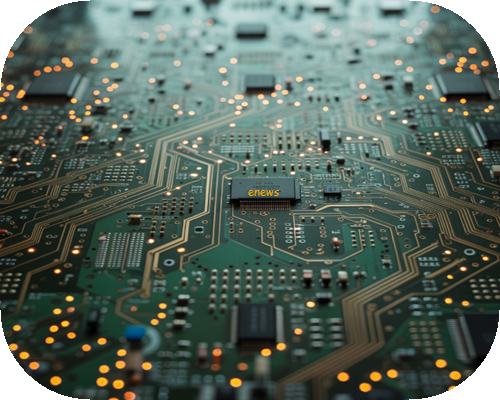A great debate is underway as political leaders, technology experts, and leaders from multiple industries engage in a serious discussion about the impending AI revolution and its implications for our country, society, and future.
The conclusions drawn from these discussions range from wildly optimistic to frighteningly dystopian. However, two things are almost universally accepted: first, the United States must win the AI race against our Chinese counterparts, and second, winning this race requires new power, equipment, and an aggressive data center buildout that depends on a combination of smart policies and coordination between governments and industry.
The National Association of Electrical Distributors (NAED) is a national organization representing wholesalers of electrical products with nearly 5,600 warehouse locations across all 50 states. Our dedicated members are critically important to the electrical equipment supply chain, and our industry is well positioned to help our nation rise to the occasion, together with our manufacturing and contractor partners. In fact, research we conducted indicates that $4.5 billion in economic activity will flow through the warehouse and distribution network to support data center buildout this year.
The question is: How do policymakers create an environment where private industry can achieve this monumental task?
Leaders in Washington must focus on expanding opportunities to attract and retain a skilled workforce while also strengthening domestic sourcing and manufacturing across the electrical equipment supply chain.
On workforce, Congress and the administration made progress in the recently passed “One Big Beautiful Bill” by including a provision to allow individuals to use money from 529 savings accounts to pay for postsecondary training programs. This will help more Americans obtain and retain well-paying jobs that don’t require a traditional four-year degree.
Congress should also pass the Veterans Energy Transition Act, which would help veterans and their spouses secure well-paying jobs in the growing energy sector.
Each year, nearly 200,000 service members transition out of active duty. NAED is already helping our members tap into this talent pool. Incentivizing this burgeoning pipeline would benefit more of those who have served and will equip our members with the talent they need to electrify America. Veterans bring valuable skills, hands-on training, and a strong sense of mission that align closely with the needs of the energy industry.
Congress should also extend and expand tax incentives designed to promote domestic manufacturing of key technologies, most notably distribution transformers. As the country begins reshoring production of certain materials and components, an incentive structure that has proven successful in the past should be reworked to provide additional relief to companies trying to do the right thing by bringing jobs back to America.
Permitting reform, long discussed but elusive, is needed to cut red tape and allow project developers the legal and regulatory certainty to build reliable mining and power generation capacity. We appreciate the Trump administration’s efforts to use executive powers to move the ball forward but need legislation to ensure these efforts are not reversed by future administrations.
Finally, we support a trade policy framework set forth by NEMA, our electrical manufacturing partner, that encourages American investments and onshoring. Their three-pronged “Tariff Offset” framework aligns trade policy with national goals by offering targeted tariff relief for capital investments in domestic manufacturing, for goods essential to AI and grid infrastructure, and for products meeting “Made in America” content standards.
Together, these sensible policies will give risk-takers the coverage they need to shift workers to critical industries, unleash the availability of materials and products sourced by American-based firms, and provide needed, targeted relief for those working to ensure the United States is able to meet the coming demands to dominate the AI race.
How useful was this article ?
Click on a star to rate it!
Average rating 5 / 5. Vote count: 2
No votes so far! Be the first to rate this post.
We are sorry that this post was not too useful for you!
Let us improve this post!
Tell us how we can improve this post?









Related Articles
Protecting a Tool That Builds an Efficient, Thriving Economy – Inside Sources
Speech and Political Violence in the Spotlight – Inside Sources
Opinion – America Divided: Charlie Kirk’s Assassination – Kevin DeAnna
The Return of the Trump Turncoats | Inside Sources
Free Speech is Too Expensive. Charlie Kirk Paid With His Life – Inside Sources
To Save Medicare, Stop Fraudulent Billing – Inside Sources
The Last Witnesses – Inside Sources
How Rate Cuts Affect Main Street vs Wall Street – Inside Sources
Recent Articles
Opinion: When Children Walked to School – Michael Barone
Nvidia to invest $100 billion in OpenAI to help expand the ChatGPT maker’s computing power – Associated Press
Supreme Court will weigh expanding Trump’s power to shape agencies by overturning 90-year-old ruling – Associated Press
How Israel could retaliate against the growing push for recognition of a Palestinian state – Associated Press
Open House meeting for the Effluent & Wastewater Pipelines & SR89 Improvements Project
Celebrating Cultures through the Stories They Tell: Yavapai College’s “Transforming Traditions” opens Oct. 3
Back to Home Page